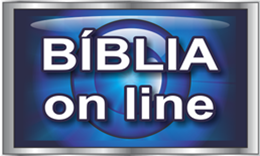The BSA/AML risk assessment should provide a comprehensive analysis of the bank’s ML/TF and other illicit financial activity risks. Documenting the BSA/AML risk assessment in writing is a sound practice to effectively communicate what Is AML risk assessment ML/TF and other illicit financial activity risks to appropriate bank personnel. The BSA/AML risk assessment should be provided to all business lines across the bank, the board of directors, management, and appropriate staff.
A synthetic data set to benchmark anti-money laundering methods … – Nature.com
A synthetic data set to benchmark anti-money laundering methods ….
Posted: Thu, 28 Sep 2023 12:30:56 GMT [source]
Here we outline key areas to explore when building your AML/CFT, sanctions, and suspicious activity risk assessment frameworks, and explain why they are important for you to factor into your institution’s risk mitigation program. Examiners should assess whether the bank has developed a BSA/AML risk assessment that identifies its ML/TF and other illicit financial activity risks. Examiners should also assess whether the bank has considered all products, services, customers, and geographic locations, and whether the bank analyzed the information relative to those risk categories. The following example illustrates the value of the two-step risk assessment process. The information collected by two banks in the first step reflects that each sends 100 international funds transfers per day.
Steps for Completing an AML Risk Assessment
Inherent risk refers to those factors that affect your organization when you have not taken any steps to mitigate them. Think about it this way – the inherent risks are present just because your organization exists and conducts a certain type of business. Likewise, your Solicitors Regulation Authority (SRA) might want to review your risk assessment process to determine whether your organization is putting in the appropriate effort to catch and prevent money laundering.
It pays to be alert to potential problems with these politically exposed persons (PEPs). New companies and new products can also more easily hide suspicious activity, making them higher risk because regulators have no information on either. The number of new enterprises is huge, so it takes time to catch up to new criminal efforts.
Guidelines from the Department of Internal Affairs
Find answers to frequently asked questions regarding FINRA Rule 3310 and AML program requirements. Registered representatives can fulfill Continuing Education requirements, view their industry CRD record and perform other compliance tasks. This suggests that are not aware that the definition of a PEP is very wide, or they believe that they cannot, or should not act on behalf of PEPS. Gain the relevant skills and knowledge to ensure that you are supporting your firm and progressing your career. At Okta, we’ve developed a Risk Ecosystem API that helps you to share signals from your security stack and reduce the hazards you face. Often, excessive dealings with foreign entities are a red flag, especially if they are countries with lax financial laws.
- Over the last few years, we have also seen an improvement in the quality of firm wide risk assessments which reflects the thought, effort and time that many firms put into these documents.
- That includes identifying customers as they are added to sanctions and other AML lists.
- Our methodology provides the basis to better understand the potential inherent money laundering risks that may arise within an institution’s wide range of products and services, customer types, and geographies.
- Each year, the UK government publishes a National Risk Assessment (NRA) that outlines the latest trends in money laundering and terrorist financing.
- Step three will build on the initial documentation that you prepared, as it involves identifying the inherent and residual AML and CFT risks your organization is exposed to (AML customer risk assessment methodology.
- To assure that BSA/AML compliance programs are reasonably designed to meet BSA regulatory requirements, banks structure their compliance programs to be risk-based.
Regulation 18A of the money laundering regulations also requires you to identify the risk of proliferation financing to your business. This can either be considered separately or within your firm-wide risk assessment. Further guidance on how to carry out a proliferation financing risk assessment can be found in the Legal Sector Affinity Group guidance. Customer due diligence requires ongoing assessment of the risk of money laundering posed by each client and the use of that risk-based approach to conduct closer due diligence for those identified as higher non-compliance risks. That includes identifying customers as they are added to sanctions and other AML lists.
Document the Risk Assessment Process
Best practice involves applying a three-tier rating scale to assess the risk of money laundering or terrorism funding occurring, identified as high risk, moderate risk or low risk. Should the risk be rated high, your mitigation efforts are not effective enough and additional risk management measures should be implemented immediately. For example, when there are adequate controls in place, risk ratings might reduce from a three to a two. Inherent risk represents the exposure your business will have to money laundering risk should you not put any processes in place to mitigate them. This step of identifying the inherent risk builds upon your documentation process in step one. A firm-wide risk assessment should evaluate the money laundering risk that your whole business is exposed to and set out how you have arrived at that conclusion.

These controls are also used to maintain compliance with applicable AML regulations. Typical categories may include Corporate Governance, policies, procedures, monitoring and control, employee training, and detection and SAR filing. Although risk assessment procedures are not specifically required by law, proper monitoring of customer accounts, individual transactions and all suspicious activity is.
Who conducts an AML risk assessment?
Risk assessments are a key component of any firm’s anti-money laundering (AML) tool kit, and can help businesses to measure the likelihood that they will inadvertently support or engage in criminal behaviour. After assessment you might decide that you take different approaches for different clients – those that you know and trust and those that you don’t have an established relationship with. The most common is entering in the client’s passport page code to confirm the passport is valid.

A risk assessment helps keep you safe from money-laundering schemes run by financial criminals. Without a plan in place, you risk the reputation and financial health of your company. Once your risk assessment policy has been finalized, you will then, with the help of the compliance officer, institute procedures to practice customer due diligence, transaction monitoring and geographical location awareness.
How do I undertake a risk assessment?
Louisa has worked in marketing communications in Australia and across the United States; writing for boutique PR agencies and non-profits in Sydney, start-ups, law firms and tech giants in Seattle and global publishing houses in New York City. Translating complex ideas into digestible, informative content – especially in the ever-evolving cybersecurity space – is never, never boring. And don’t forget, your customer doesn’t need to be in a foreign land to set off a red flag. If they are in a different city or province, enquire as to why they are coming to you instead of seeking a similar service closer to them, geographically. Be sure to complete a sanction screening to confirm that any individual you are working with is not on any sanction lists.
















